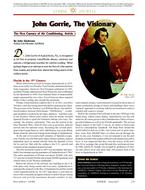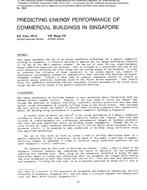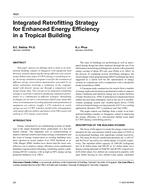The impact of a V-formation delta-winglet array on surface convection enhancement is assessed in a developing channel flow using infrared thermography and CFD simulation. Temperature distributions on the heat transfer surface are measured with the infrared technique, while the flow structure and pressure drop data are provided from CFD analysis. The Vstructure is inspired fromgroupmovement of migrating birds in nature, aiming to create constructive interference between vortices and thereby improve vortex generator (VG) performance. A rectangular channel of 6 mm (0.236 in.) high and 152 mm (5.984 in.) wide is built to model a single passage of plain-fin heat exchangers, with an opaque, uniformly heated wall on the bottom and a transparent wall on the top. The frontal air velocity ranges from 0.9 to 2.5 m/s (2.953 to 8.202 ft/s), corresponding to a Reynolds number range based on channel height of 340 to 940. For a single winglet pair, three angles, 15°, 30° and 45°, are investigated to identify an appropriate deployment with respect to the angle of attack. The multipair VGs, including a two-pair V-array, in-line two-row pairs, and a three-pairV-array, are then placed at this angle for comparison. The proposed V-array demonstrates superiority in heat transfer to the conventional multirow design and the boost effect by the trailing pair is consistent throughout the Reynolds number range. The two-pair V-array deployed at 30° yields 14%-32% heat transfer augmentation and the highest modified area goodness factor among all investigated designs. It is therefore recommended for implementation in prototype plainfin heat exchangers, particularly refrigerating evaporators of low fin density to which the experimental range is most relevant.
Citation: ASHRAE Transactions – Volume 120, Part 2, Seattle, WA
Product Details
- Published:
- 2014
- Number of Pages:
- 11
- File Size:
- 1 file , 3.9 MB
- Product Code(s):
- D-SE-14-009


